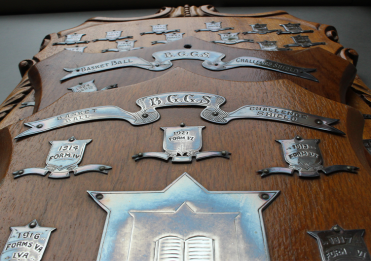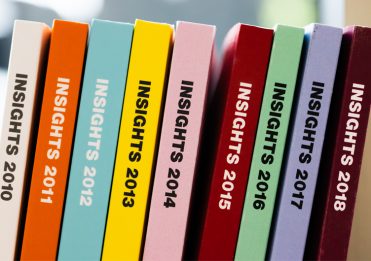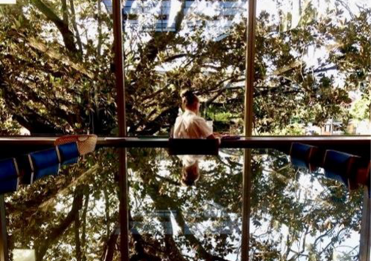Some students hold memories of their time at Grammar as precious and they want to give back to the School they loved. They often think of innovative ways to contribute, and frequently present students benefit in surprising ways. One such student was Edmee Gainsford (Ilma Edmee Park, 1934). Edmee believed Girls Grammar had given her so much that, after her passing in 2002 aged 105, her son, Dr Len Gainsford, made contact with the School to identify a way of giving in her memory that would be truly meaningful.
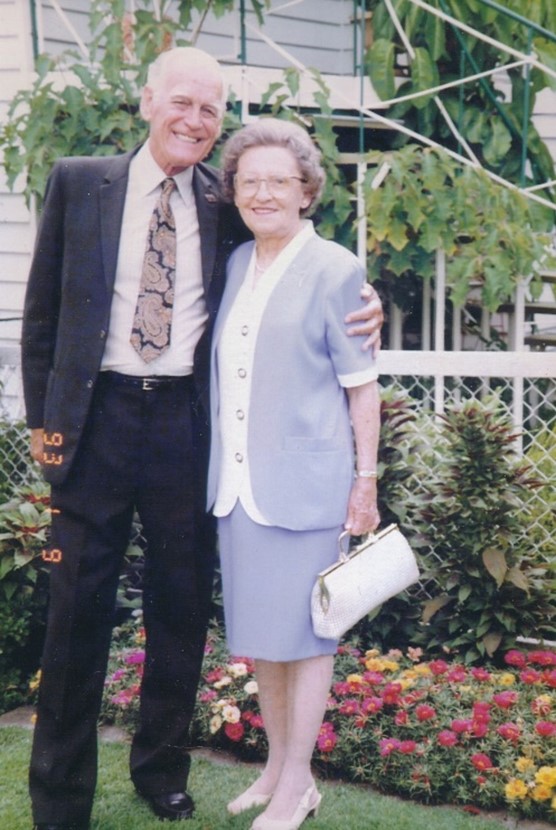
1993 Ron and Edmee Gainsford courtesy of Dr Len Gainsford 2015
Edmee and her family believed in the potential of young people, especially young girls, and they wanted to contribute in a way that opened doors for that promise to be realised. Dr Gainsford, in conversation with then Director of Instrumental Music, Mark Sullivan, realised there was also an opportunity to target an area of special need within the music program. Music had always been an important part of Edmee Gainsford’s life. She played the piano and the violin like her mother, and she was delighted that her three children all had active musical lives.
In 2008, Mark Sullivan and Dr Gainsford decided how a donation in honour of Edmee Gainsford could be most useful. It was agreed that a special viola would be purchased. The Gainsford family believed in enabling students to excel, and here was the opportunity to build a strong heritage of viola players within the School. Every year, viola students participate in The Edmee Gainsford Prize, adjudicated by a professional violist, for the honour of using the viola for a year.
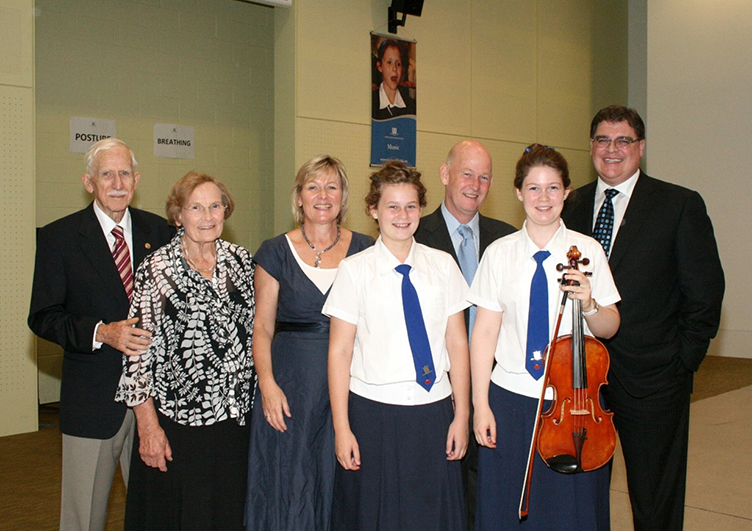
2009 Winner, Ellen Harrison (2009) with her family and Dr Gainsford
Input from musicians from Queensland Symphony Orchestra was sought to select a worthy instrument for purchase. It was determined that a fine, handmade instrument from Hungarian luthier, Draskoczy Gabor, had the best sound quality and projection capability.
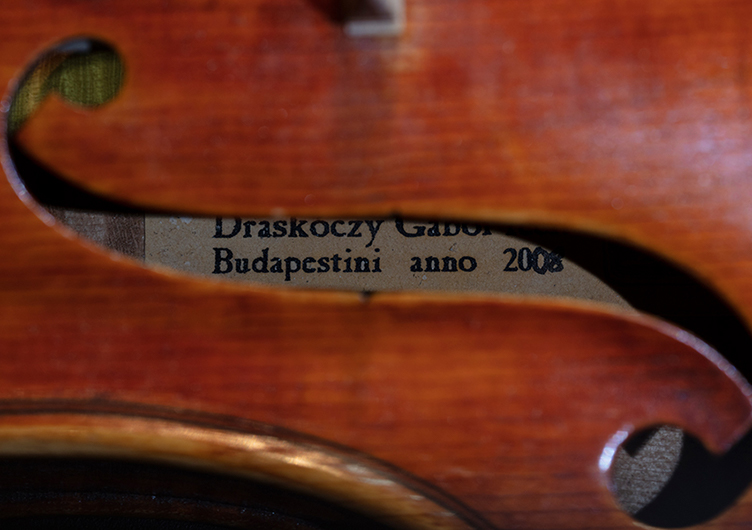
So why a viola? Given that there is a comedic genre dedicated to ‘viola jokes’, it is safe to say that being a violist has not always been easy. The history of inter-instrumental ‘ribbing’ targeting violists is a long one. Eighteenth-century composer, Johann Joachim Quantz, wrote that the viola was for people with ‘… no particular gifts with which to distinguish themselves on the violin’, and that ‘… the instrument yields all too few advantages to its players’ (Boyd 2015). In part, Quantz was referring to the inherent acoustic challenges of projecting and making a good tone on the viola, especially during a time when the strings were of low tension and fashioned from animal gut. This has certainly been a contributing factor to the relative paucity of solo repertoire for the instrument.

Then, of course, there are the physical dimensions of the instrument—simply to hold the left arm extended so far for the duration of a concerto or symphony takes some serious stamina! The strings are thicker and denser than violin strings, which means the player must work harder with the bow to produce a good tone. However, when played well the viola has a rich, mellow, and honey-like texture that is deep, sonorous, and rewarding. The viola has aptly been called the ‘Cinderella’ of the string family. It has a heart of gold and great hidden beauty that is often overshadowed by its more rambunctious and flashy sisters: the violin and the cello. The viola has its own distinctive voice that is absolutely essential to the function of a string quartet, a string orchestra, or a symphony orchestra. Such an ensemble without the viola would be like having a choir with no tenors or The Beatles with no George Harrison. As such, it is a crucial part of a healthy ensemble-based Instrumental Music Department and Girls Grammar ensembles benefit from players that excel in playing the viola.
And what is special about this viola? The photographs in this article show that this instrument has a rich, reddish pigment and some antiquing that makes it look older than it is (the viola was purchased in March 2009). The body is 16 inches in length which makes it a relatively large viola which adds to the physical challenge of the player but also means that there is an excellent resonating chamber and string tension for sound projection.
Ultimately, the Gainsfords’ contribution not only opens doors for young musicians to realise their potential, like Myella Jago (10H), the violist who is playing this beautiful instrument in 2022, but also serves to enhance Girls Grammar’s Instrumental Music program by promoting study of an underrated, challenging, and often discriminated against instrument. It is an honour that the School has been able to celebrate Edmee’s legacy in such a meaningful way through her family’s enduring gift of this special instrument.
Mr Michael Patterson
Coordinator of Strings
Reference
Boyd, M. (2015). The History of The Viola Joke. The Strad, [online]. Available at: https://www.thestrad.com/playing-hub/the-history-of-the-viola-joke/5399.article. [Accessed 20 May. 2022].
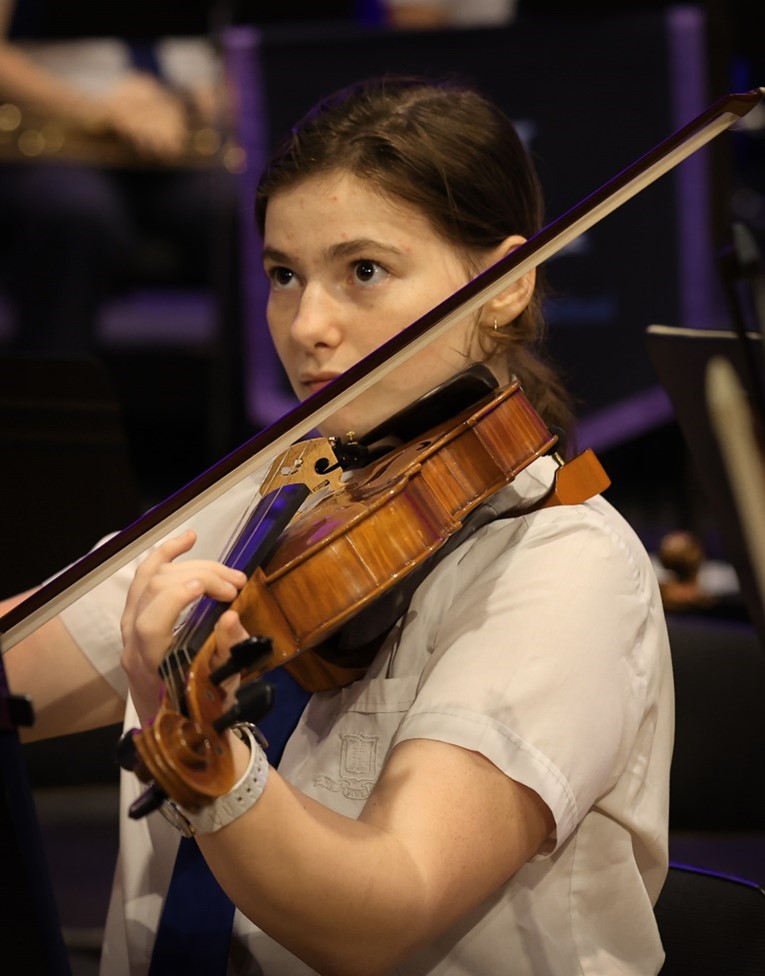
Myella Jago (10H)



